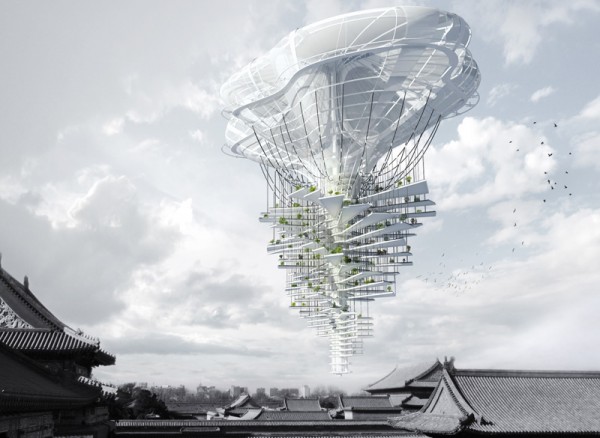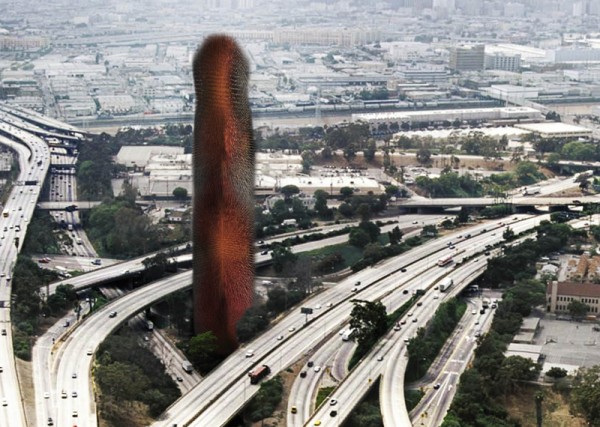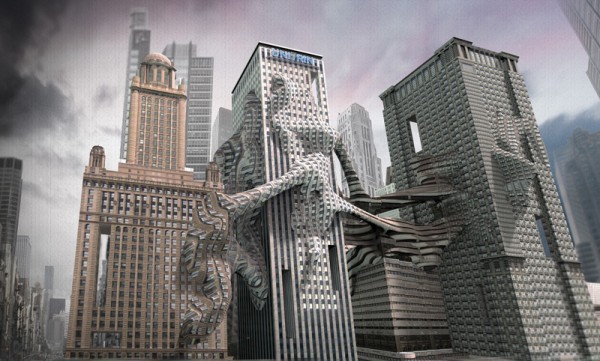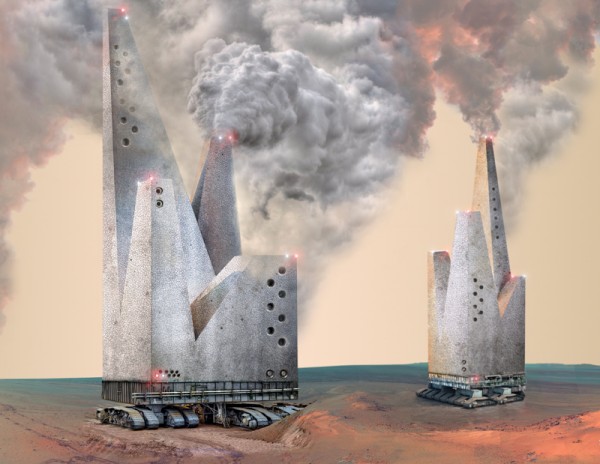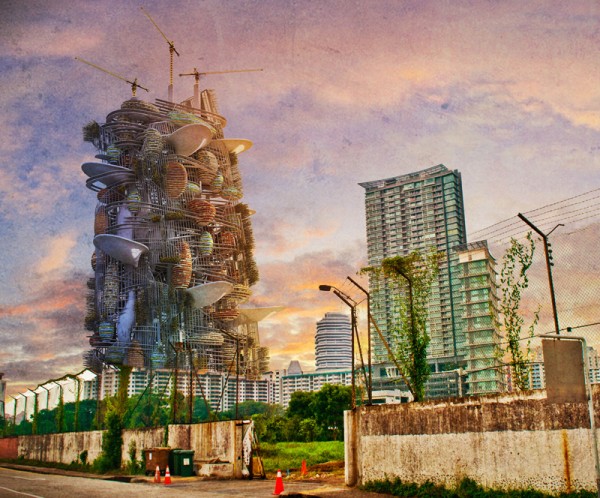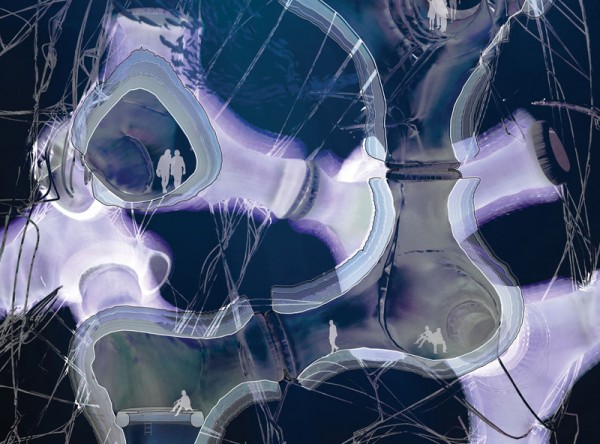Third Place
2013 Skyscraper Competition
Ting Xu, Yiming Chen
China
The rapid increase of population within the major cities around the world has led to poor development and serious urban design problems, including the lack of infrastructure, housing, and recreational areas. In Beijing, a large portion of the historic center has been demolished.
One way to make scarce green and recreation space available to residents of this crowded city is a skyscraper that floats above the land, taking new development to the sky. The Light Park stays afloat thanks to a large, mushroom cap-like helium-filled balloon at its top, and solar-powered propellers directly below. Programmatic platforms that host parks, sports fields, green houses, restaurants, and other uses are suspended from the top of the structure by reinforced steel cables; the platforms fan in different directions around the spherical vessel to balance its weight. These slabs are also staggered to allow for maximum exposure to sunlight on each level.
Translucent solar panels cover the top of the vessel to power the uses below, and water collectors, also located at the top, direct precipitation towards filters that send clean water throughout the structure.
Though it doesn’t completely solve Beijing’s serious traffic and overpopulation problems, the Light Park can return valuable green space to the public, and also help mitigate the pollution that comes with increased development – with parks and plants floating in the sky above the city, the air is partially cleaned. Read the rest of this entry »

